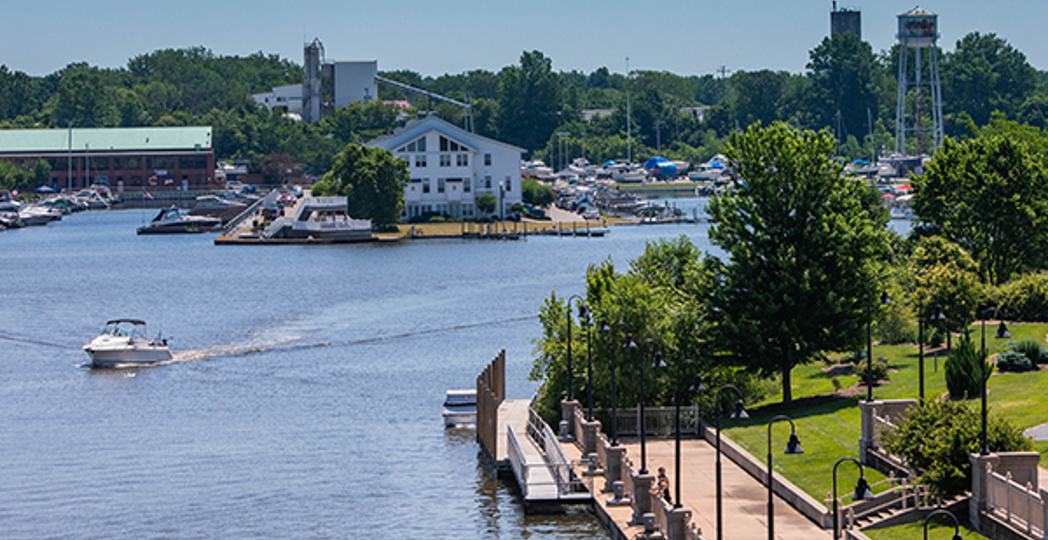How a Fresh River of Funds Might Make Northeast Ohio’s Waterways Healthier
by Jill Sell | May. 9, 2022 | 12:00 PM

Laura Watilo Blake
In late April and early May, the rookery of almost 200 great blue heron that nests near the Black River and Lake Erie shoreline in Lorain transforms into a noisy nursery.
Chicks hatch from pale blue eggs and demand food from their parents. The baby birds stay in their not very neat, but efficient, stick nests until they fledge at about seven to eight weeks.
The fact that the blue herons, with their 6-foot wingspans, are flourishing along the Black River, a waterway that once carried the ignominious “river of fish tumors” label, is a sign that a healthier future for Northeast Ohio’s waterways is not only possible but achievable.
Since the beginning of the Great Lakes Restoration Initiative in 2010, the birds' quality of life has steadily improved thanks to efforts to revitalize its 300-acre nesting area along the river with better water quality and food sources.
“We still have two active projects behind Lorain’s old abandoned steel mills,” says Lorain Mayor Jack Bradley. “But what I am most proud of is the return of fish and fowl to Lorain’s reclamation site.”
And now, with a fresh round of federal investment, conditions along the Black River and waterways like it are bound to improve even more.
In March, President Joe Biden visited Lorain to announce that $1 billion from the recent bipartisan Infrastructure Investment and Jobs Act has been earmarked for cleaning and restoring the most severely degraded sites in the Great Lakes region.
Lorain wants to get a piece of that pie. The Black River is still designated by the Environmental Protection Agency as an “area of concern,” a waterway with conditions that adversely affect the environment, human health and the local economy.
But Bradley hopes that it will soon be taken off the EPA’s list. The city received a $15 million federal grant for river improvements in the past, and is now eyeing additional grants.
“The health of the Black River has been integral to the development of the city of Lorain,” says Bradley. “Not only can the river be a source of economic development but an environmental jewel.”
Lorain is not alone in that hope. The Black River is one of 14 waterways in the Great Lakes region on the EPA’s list, including the Maumee River in Toledo and Cleveland’s infamous Cuyahoga River.
Despite recent changes to the Kent Dam and the 2020 removal of the Brecksville Dam, the Cuyahoga is still dealing with legacy sediment contamination — years and years of indiscriminate dumping that will take either dredging or capping the bottom material. But in yet another sign of progress, the Ashtabula River was taken off the list in 2021.
“Our goal is to take care of most areas of concern by 2030,” says EPA Great Lakes National Program office director Christopher Korleski. “The rest will be in healing mode. When a new habitat is planted, sediment is cleaned up and other actions are taken.”
Better conditions on Northeast Ohio’s rivers will hopefully lead to a cleaner Lake Erie, which is still fighting harmful algae blooms, invasive species, climate change and exploitation of its resources. And the fresh round of federal funding into projects like the Great Lakes Restoration Initiative offers hope for a lake that's healthier in the near future.
“I have a saying: ‘If you clean it, they will come.’ If you have an old abandoned lakefront with a lot of dead fish, no one will want to go there,” says Korleski. “But if you improve the water quality and clean the lakefront, it will be beneficial to the entire community.”
Trending
-
1
-
2
-
3
-
4
-
5










